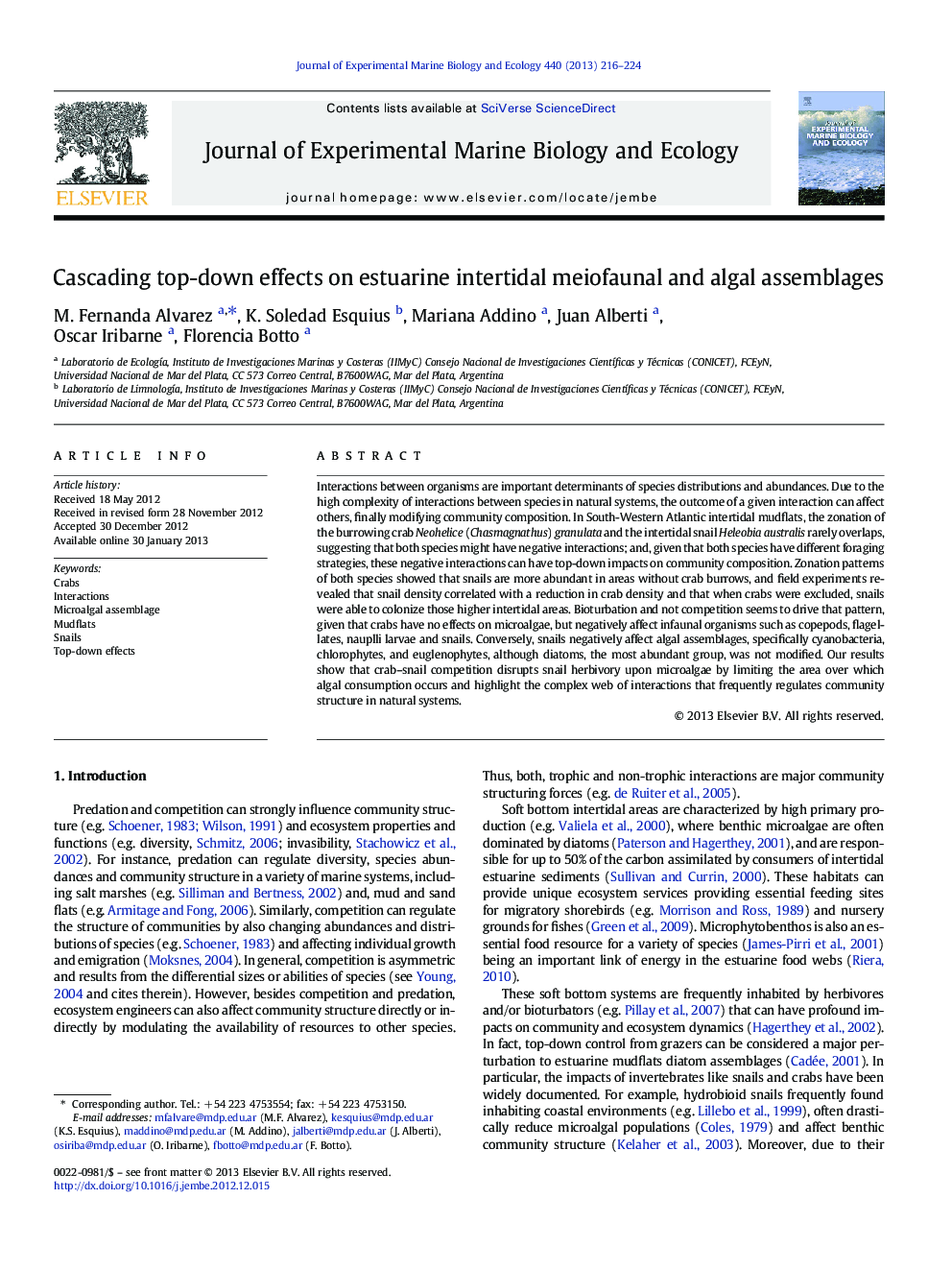| کد مقاله | کد نشریه | سال انتشار | مقاله انگلیسی | نسخه تمام متن |
|---|---|---|---|---|
| 4395821 | 1618435 | 2013 | 9 صفحه PDF | دانلود رایگان |

Interactions between organisms are important determinants of species distributions and abundances. Due to the high complexity of interactions between species in natural systems, the outcome of a given interaction can affect others, finally modifying community composition. In South-Western Atlantic intertidal mudflats, the zonation of the burrowing crab Neohelice (Chasmagnathus) granulata and the intertidal snail Heleobia australis rarely overlaps, suggesting that both species might have negative interactions; and, given that both species have different foraging strategies, these negative interactions can have top-down impacts on community composition. Zonation patterns of both species showed that snails are more abundant in areas without crab burrows, and field experiments revealed that snail density correlated with a reduction in crab density and that when crabs were excluded, snails were able to colonize those higher intertidal areas. Bioturbation and not competition seems to drive that pattern, given that crabs have no effects on microalgae, but negatively affect infaunal organisms such as copepods, flagellates, nauplli larvae and snails. Conversely, snails negatively affect algal assemblages, specifically cyanobacteria, chlorophytes, and euglenophytes, although diatoms, the most abundant group, was not modified. Our results show that crab–snail competition disrupts snail herbivory upon microalgae by limiting the area over which algal consumption occurs and highlight the complex web of interactions that frequently regulates community structure in natural systems.
► Neohelice granulata crabs displace Heleobia australis snails toward low intertidal.
► This displacement is likely due to bioturbation and not by food competition.
► Crabs and snails negatively affect specific infaunal organisms, such as copepods.
► Snails reduce microphytobenthos abundances and affect microalgal assemblages.
Journal: Journal of Experimental Marine Biology and Ecology - Volume 440, February 2013, Pages 216–224